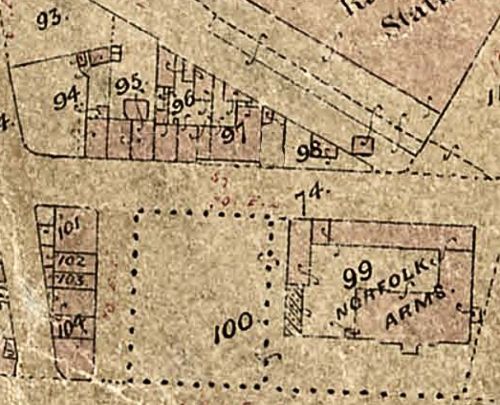
|

|
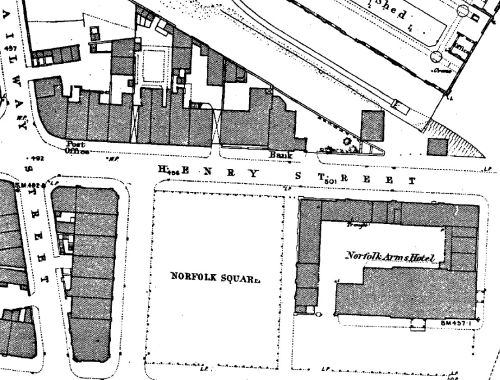
|
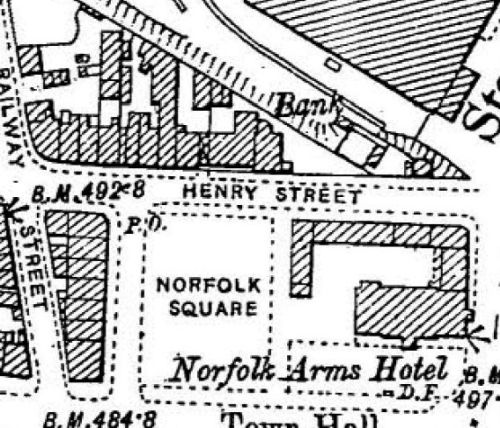
|
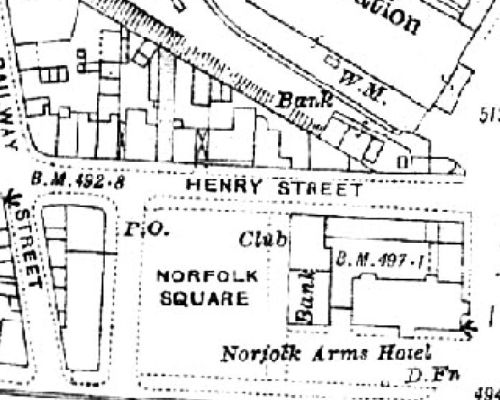
|

Auction advertisement for Numbers 1, 2 and 3 Norfolk Square, 21 July 1866. |
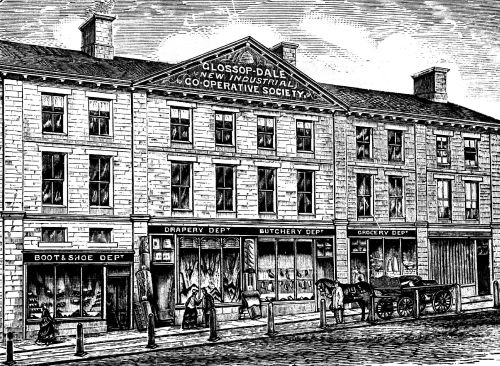
The original Co-op buildings after the acquisition of 1869 and move of the Post Office; illustration published in the Society's Quarterly Report 1885. |

The Co-op buildings after Ingersons had moved in 1889. |
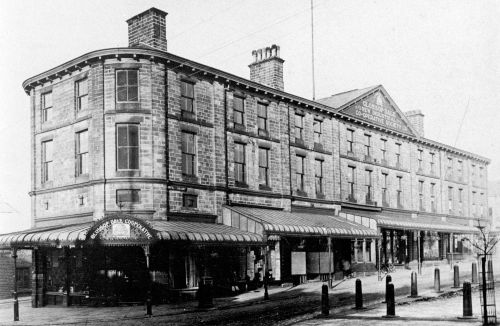
The Co-op buildings after the verandahs had been installed. |
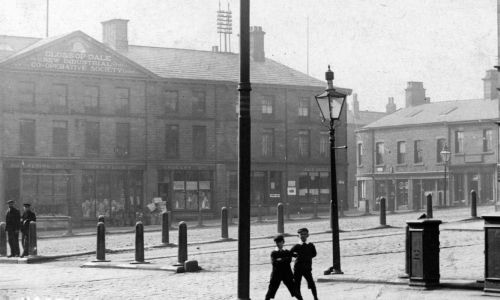
The corner of Norfolk Square and Henry Street. The electricity cabinets at the bottom right indicate that it is after 1903 whilst the lack of paths on the square mean it is before September 1906. |
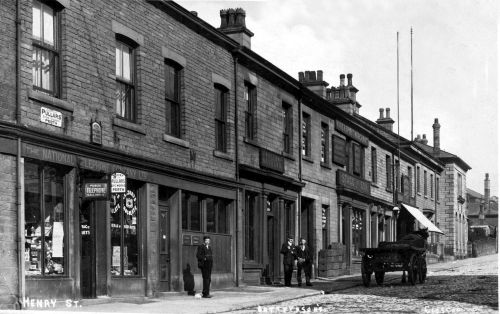
Henry Street at about the turn of the 20th Century with the National Telephone Company at number 4, Fullers at number 8 and Staggs at number 12. The plaques on the wall beside the door of number 6 (then number 10) are for the solicitors Tweedale & Marsden. |

This view of Norfolk Square and Henry Street is probably around 1910, the Co-op verandah being in place. |
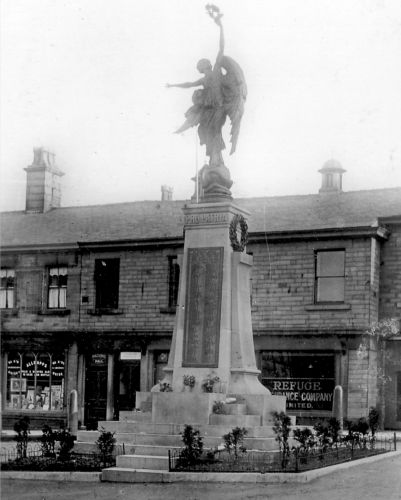
This view of 12 to 18 Henry Street is probably from the 1930s. The prominent Stagg sign appears to have been removed from number 12 and the Refuge Assurance Co. is occupying number 18. |
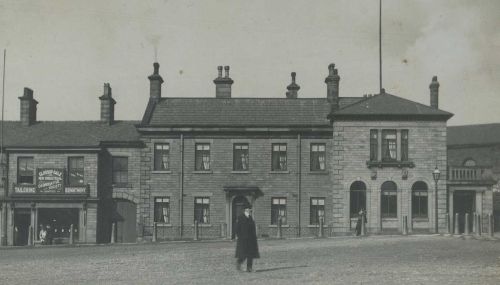
This view of 18 to 22 Henry Street is probably from around 1905 as the diagonal paths have not been laid out. |
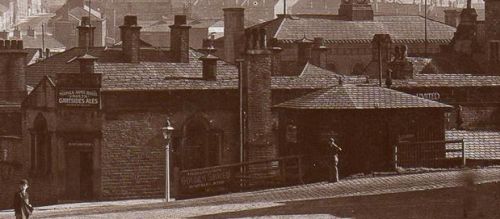
This view shows Norfolk Chambers about 1935 with the Norfolk Vaults on the corner and Lloyds Bank partially obscured by the Coal Office. |

Norfolk Square about 1903 (the diagonal paths are not laid out) showing some of the buildings (next to the entrance to Bagshaw & Fielding) which were replaced by the Liberal Club. |
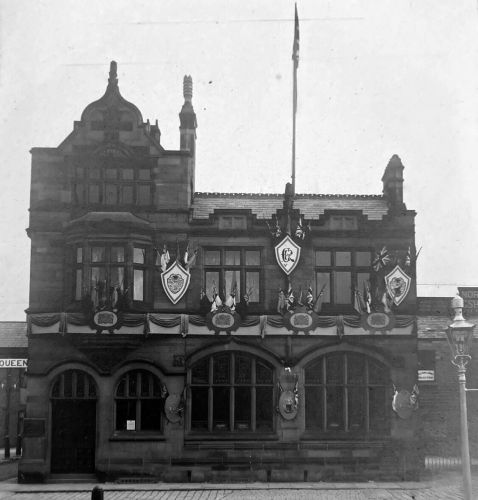
The Manchester & County Bank decorated for the 1911 coronation. A sign in the window of Ellison & Jones, on Henry Street, can be seen between the bank and the lamp post. |